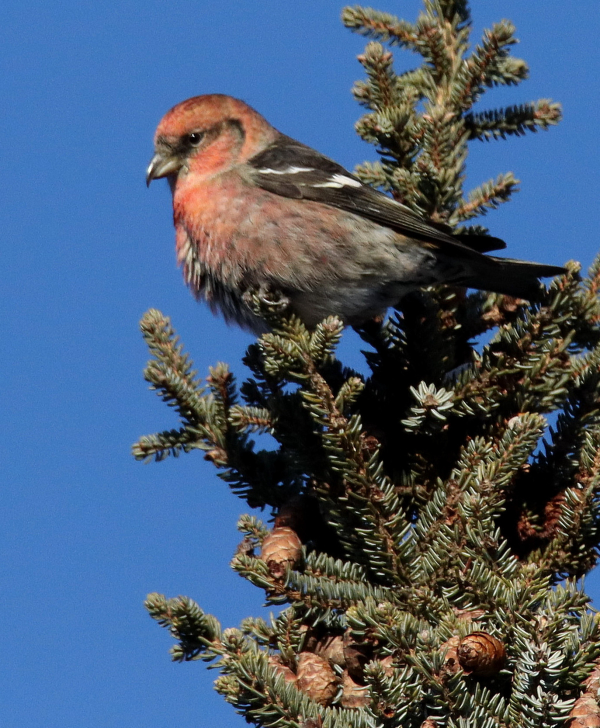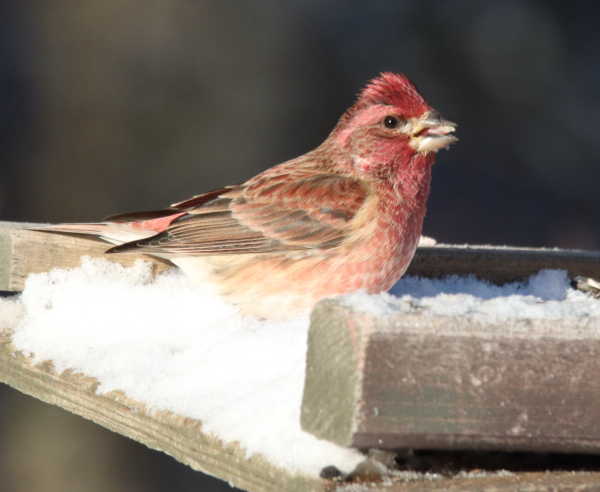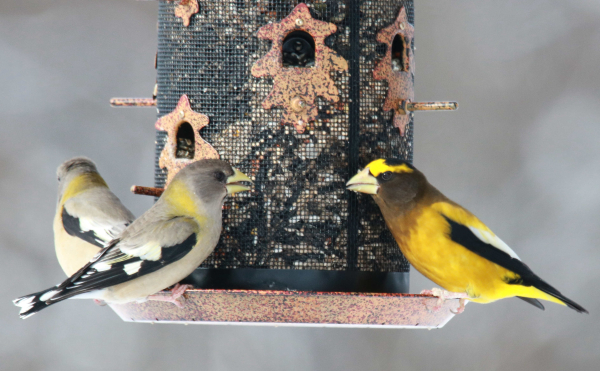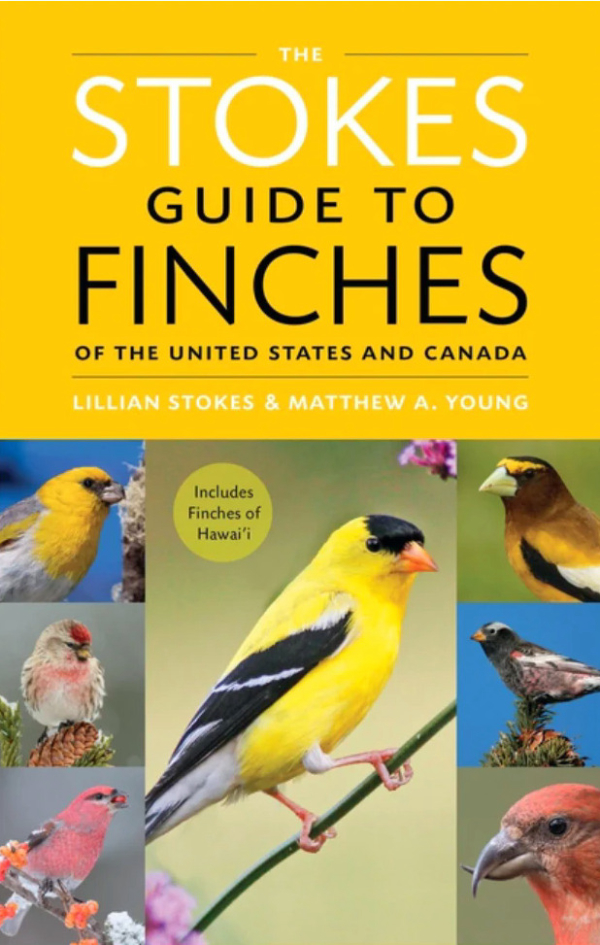
Crossbills are an interesting group of finches, as represented here by a male White-winged Crossbill. Will you have a chance to encounter White-wings and other finches this winter? (Photos by Paul Konrad.)

Grosbeaks are another of the specialized finches that may visit northern feeding stations this winter, such as these female and male Evening Grosbeaks.

More birders are likely to experience the appearance of Purple Finches at their feeders this fall through early spring.

Recently published, The Stokes Guide to Finches of the United States and Canada is the new standard for anyone interested in North American finches.
|
Northern finches make up a significant number of species that visit feeders during fall and winter, including Purple Finches, Pine Siskins, Redpolls, Red Crossbills, and other impressive finches along with unrelated Red-breasted Nuthatches, Blue Jays, and Bohemian Waxwings. For many of us, it’s a special thrill if such exciting birds as Evening Grosbeaks or White-winged Crossbills find our feeding station, and many birders will travel to have a chance to see Pine Grosbeaks or Bohemian Waxwings when the opportunity arises. Every year is different, dictated by seed and berry production by trees in the boreal forest, so each fall we look forward to referencing the Annual Winter Finch Forecast!
Produced by the Finch Research Network (FiRN), this year the 27th Annual Winter Finch Forecast indicates this will be a good season for southward movements for many species in eastern Canada due to “mostly very poor tree seed crops in the boreal forest from central Quebec west to Manitoba,” adding that this winter has “the potential of being the biggest flight year since 2020-21.”
The Forecast continues that: In the eastern boreal forest where the very poor seed crop is evident, significant seed sources including White Spruce, Tamarack, and White Birch trees have a total absence of any new seed crop over large areas. The almost regularly dependent food sources, like Black Spruce and alders, are below average within these same areas. In addition, it points out that a very early, small but widespread movement of Redpolls in eastern Canada is pointing to a possible poor seed crop in northern Quebec and Labrador.
The Forecast also notes that there are 2 areas with significant cone seed production this year: First, the Adirondack Mountains in New York through New England, the Gaspe in Quebec, and the Maritime Provinces to southern Newfoundland. Second, the northern region from northeast Manitoba through the Northwest Territories into parts of Alaska and southward into the mountains of western Canada and United State also has a widespread above-average multi-species seed crop.
Spruce budworm outbreaks from Manitoba eastward were widespread this summer, providing ample food sources for Evening Grosbeaks, Pine Siskins, and Purple Finches during the nesting season (as well as the “budworm warblers”). It is noted that Purple Finches and Red-breasted Nuthatches are moving south in numbers, and have been since mid-August.
To learn more about the potential of seeing each of species of finches, plus the 3 aforementioned species of birds dependent on similar food sources, see the Annual Finch Forecast at Winter Finch Forecast 2025-2026 - FINCH RESEARCH NETWORK (finchnetwork.org). The Finch Research Network is a non-profit organization that thanks the many birders, naturalists, biologists, and foresters who contribute their tree seed reports to the Finch Forecast.
The Ultimate Finch Guide
To learn about the biology, range, and identification of North American finch species, all birders should be aware of and refer to the new, exciting book: The Stokes Guide to Finches of the United States and Canada at The Stokes Guide to Finches of the United States and Canada – Buteo Books a must-have reference book that features more than 345 stunning color photographs, plus range maps for 43 species.
Share your backyard birding experiences and photographs with The Birding Wire at editorstbw2@gmail.com